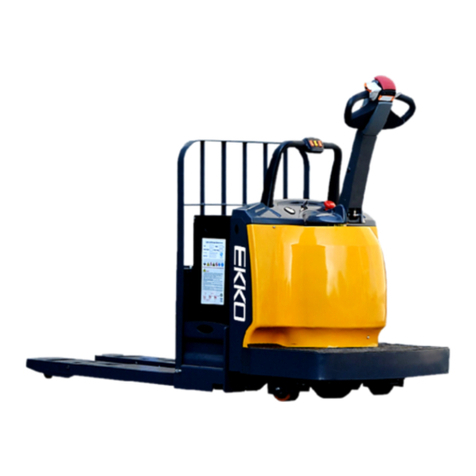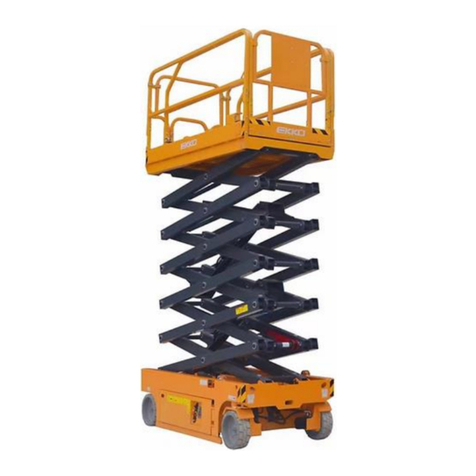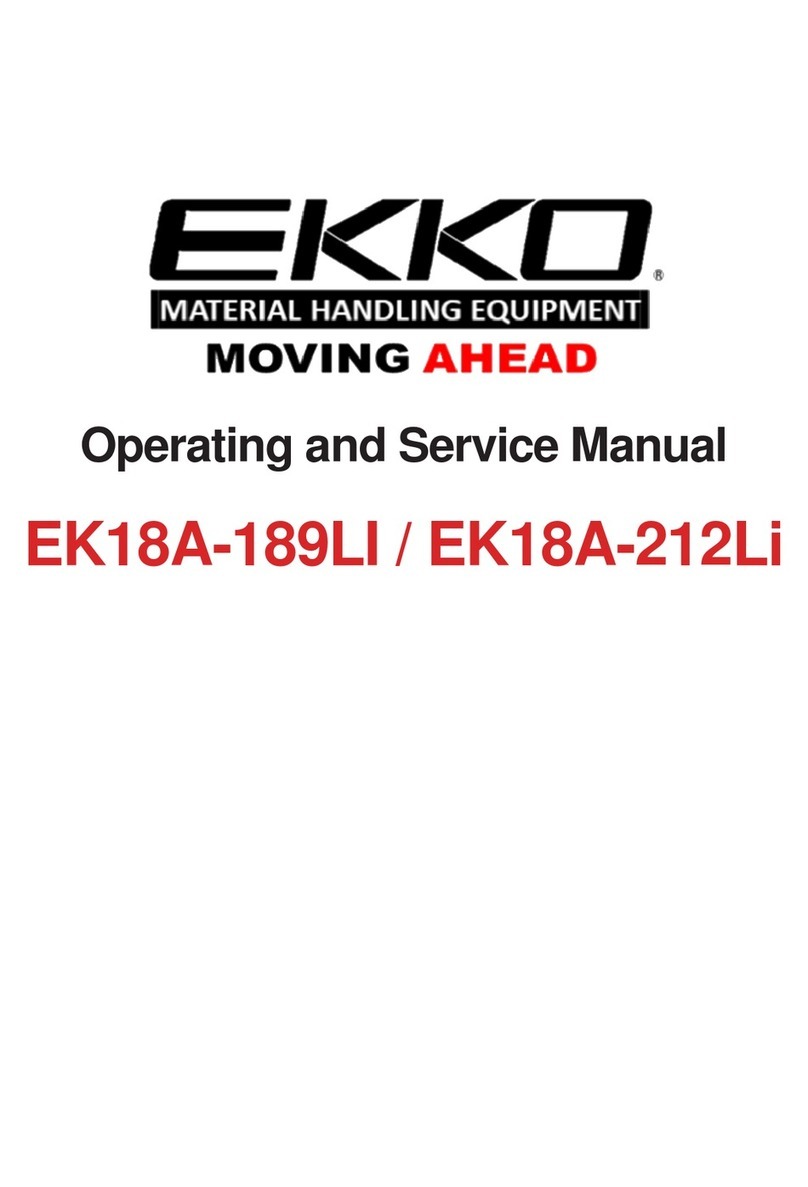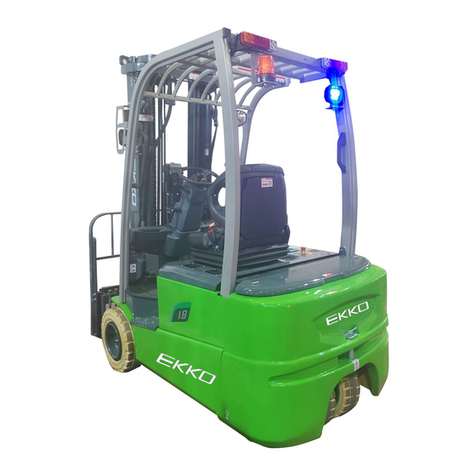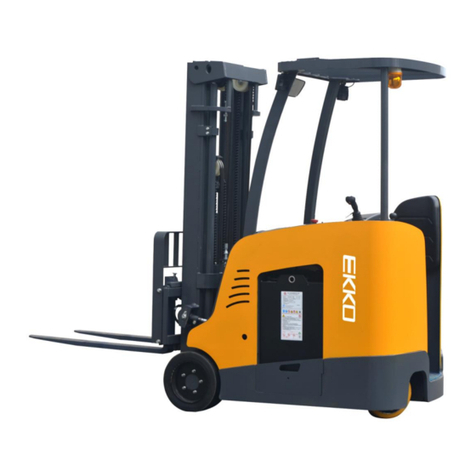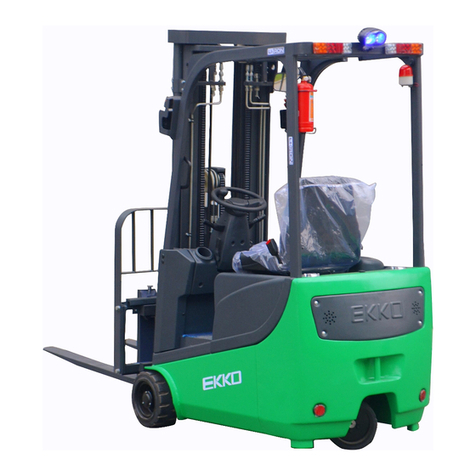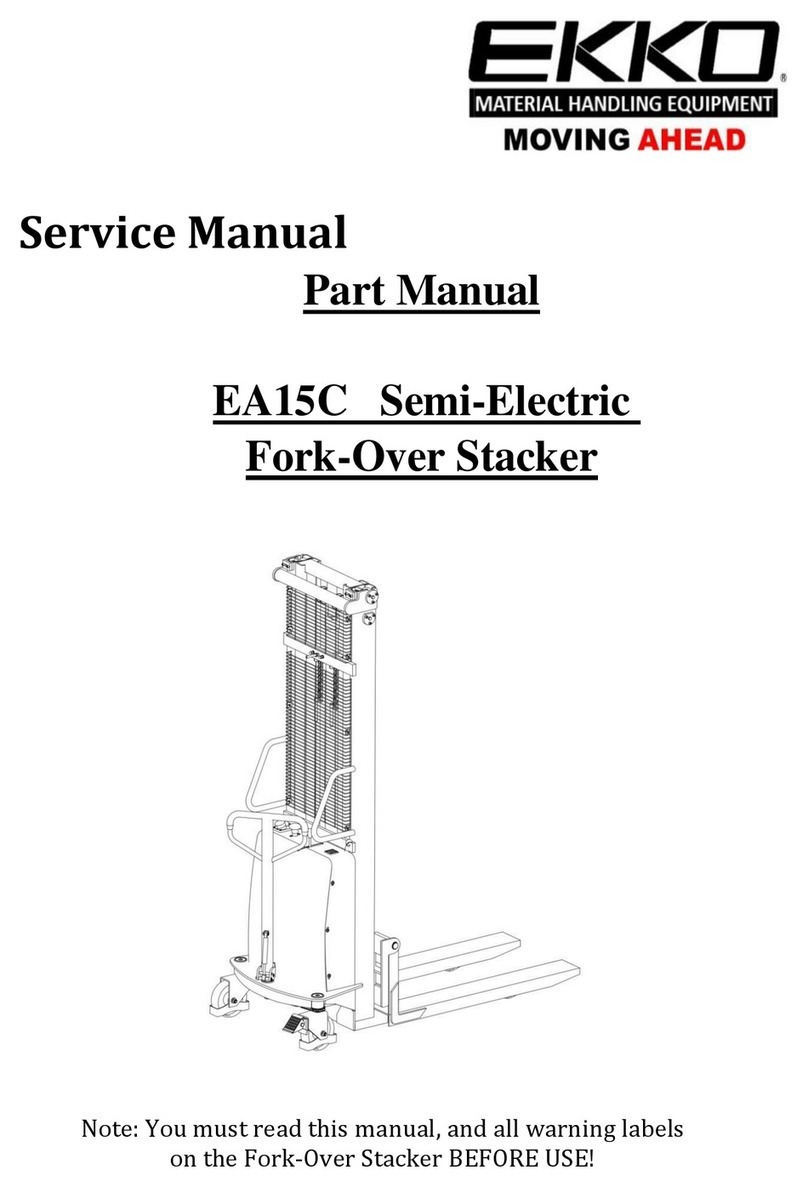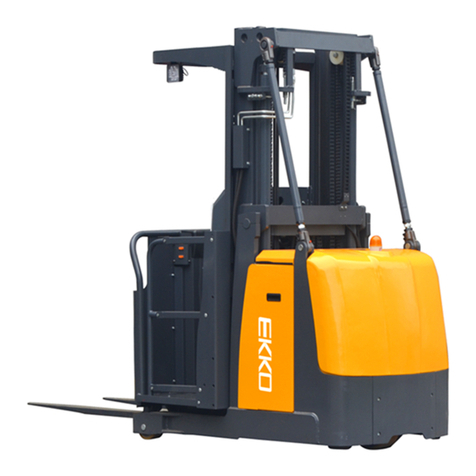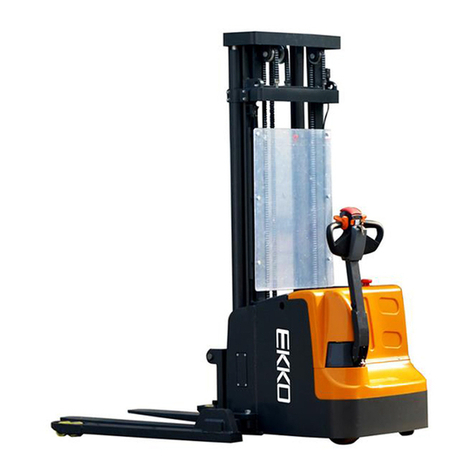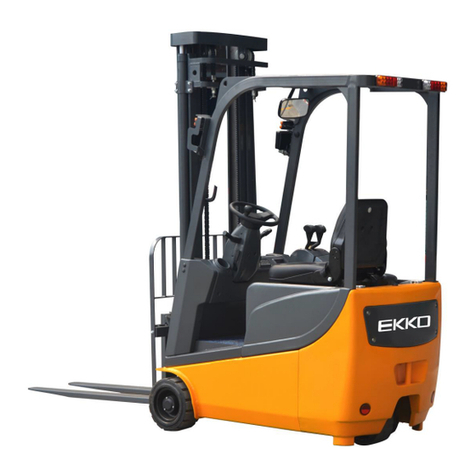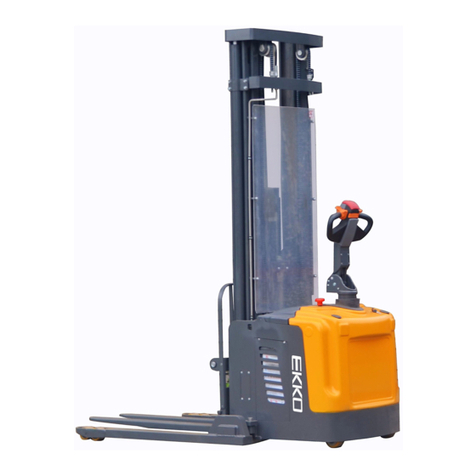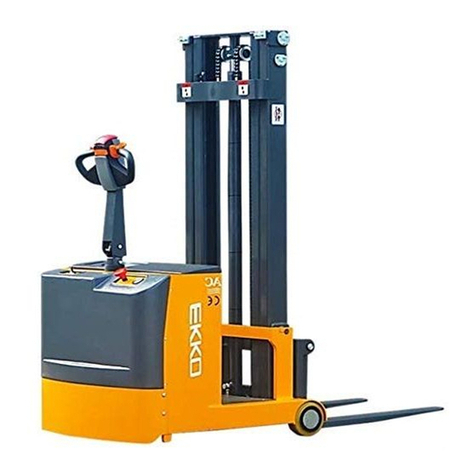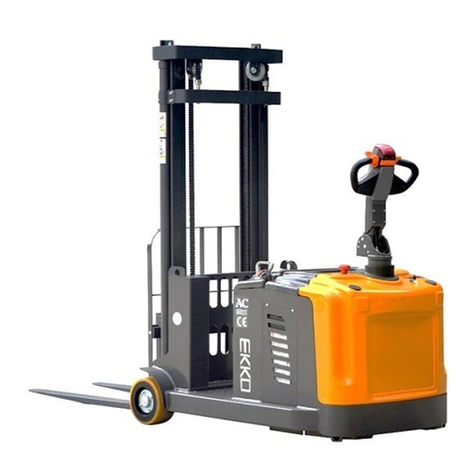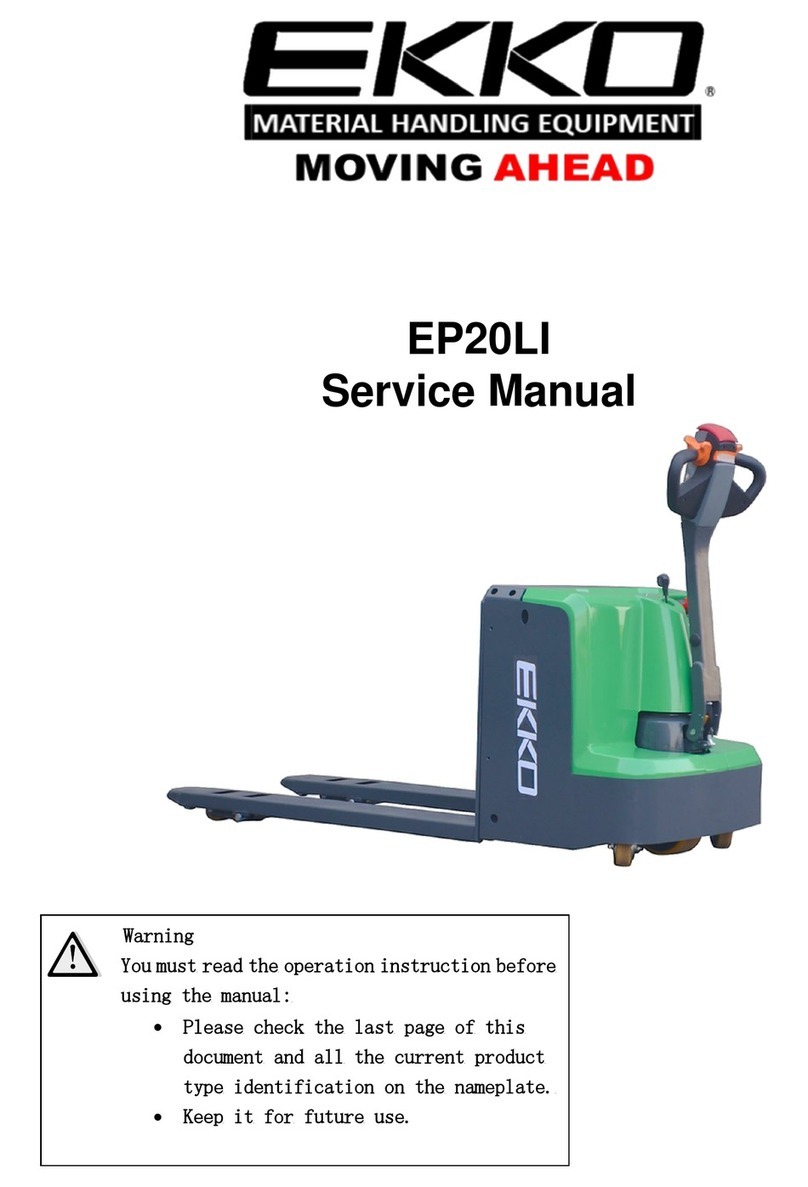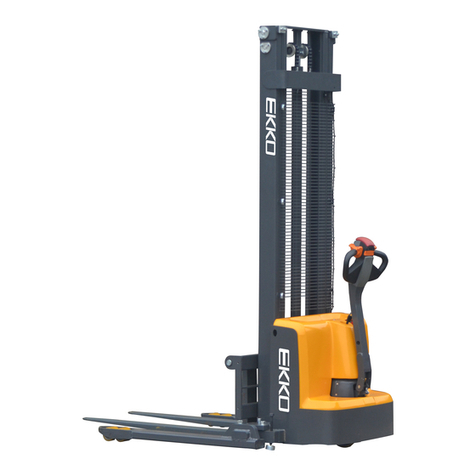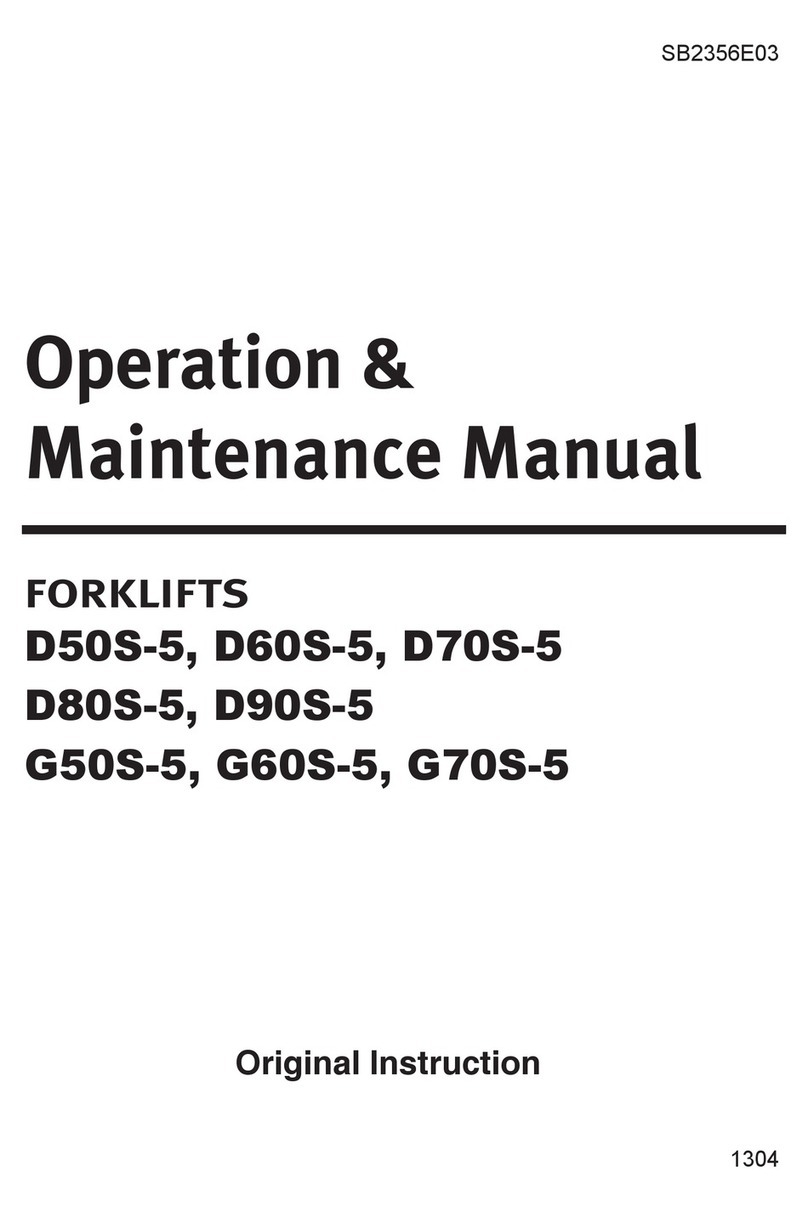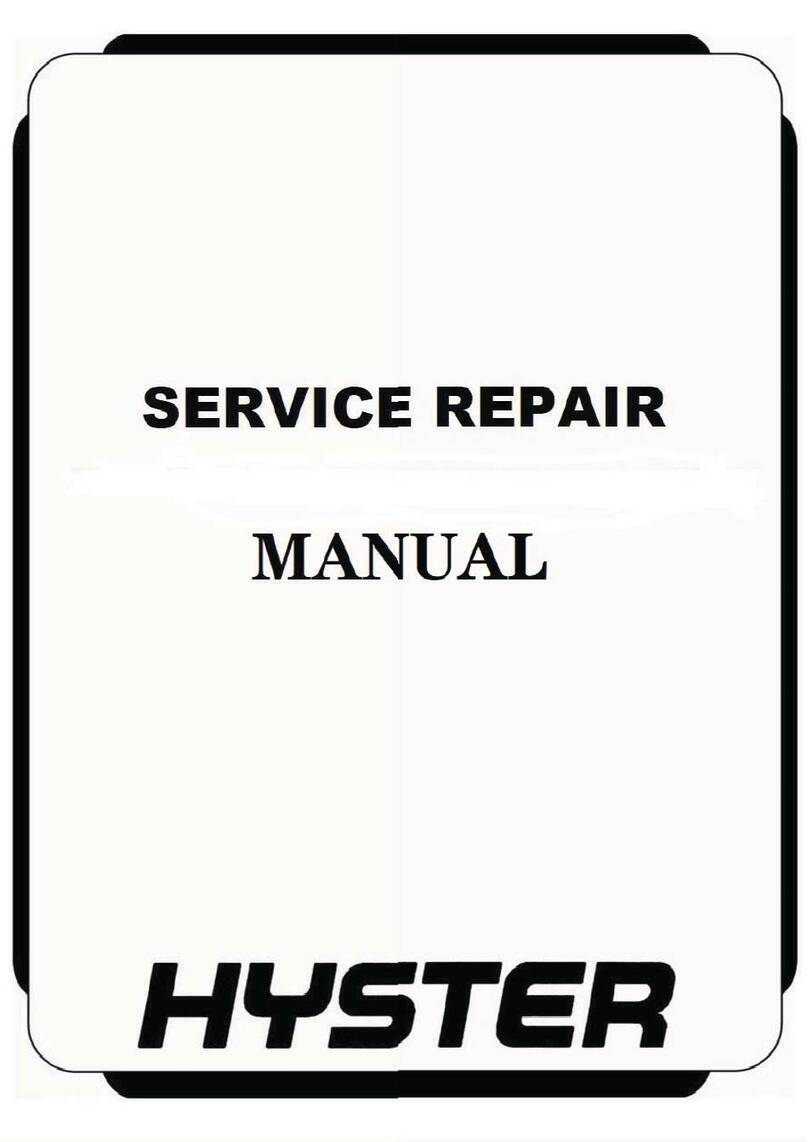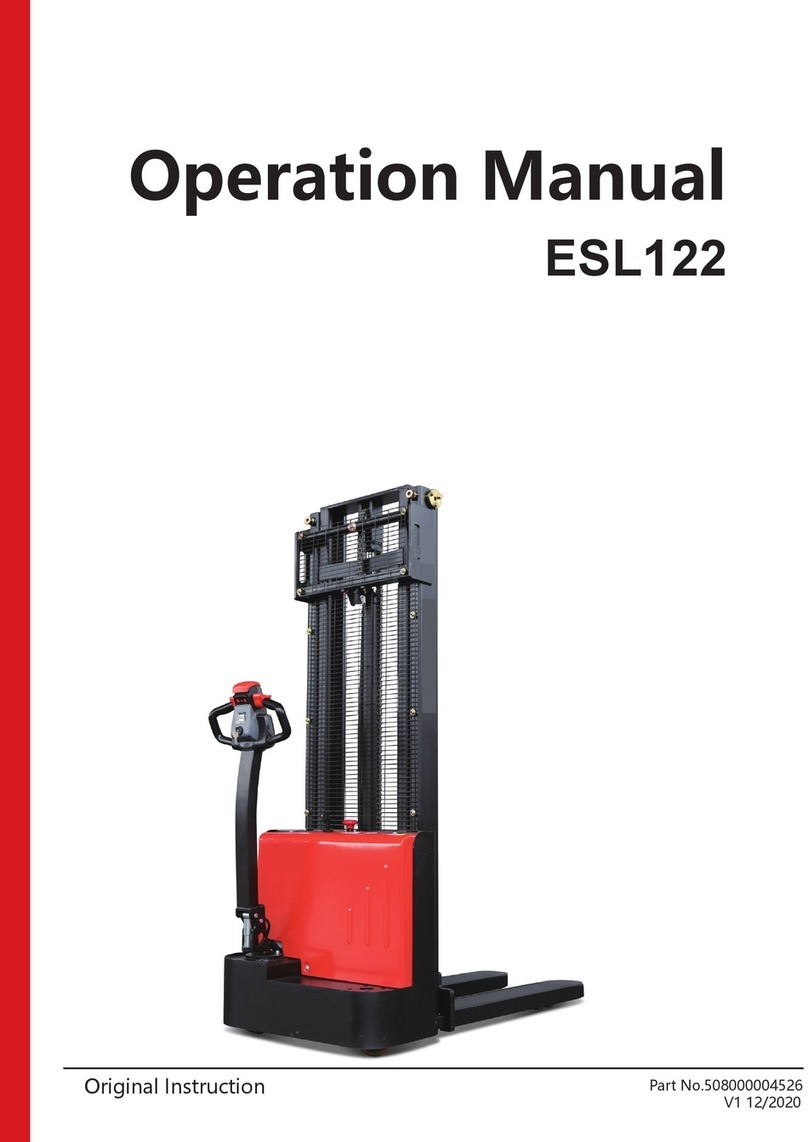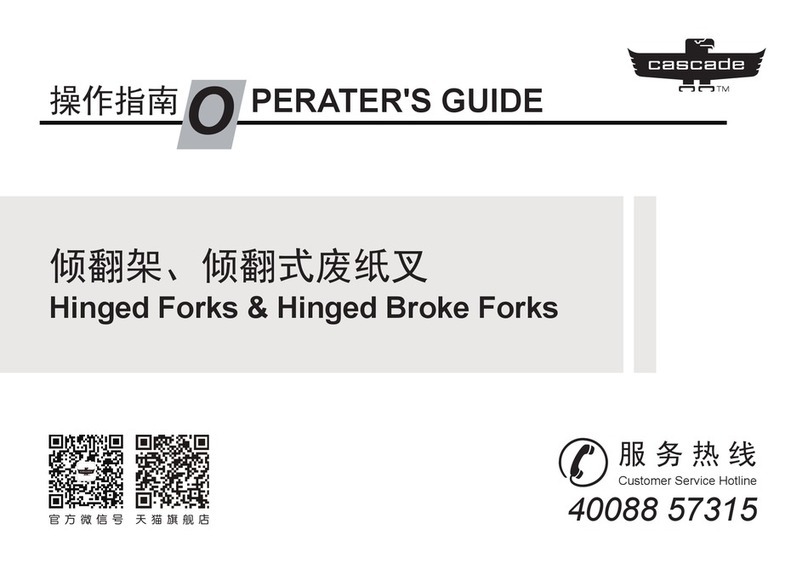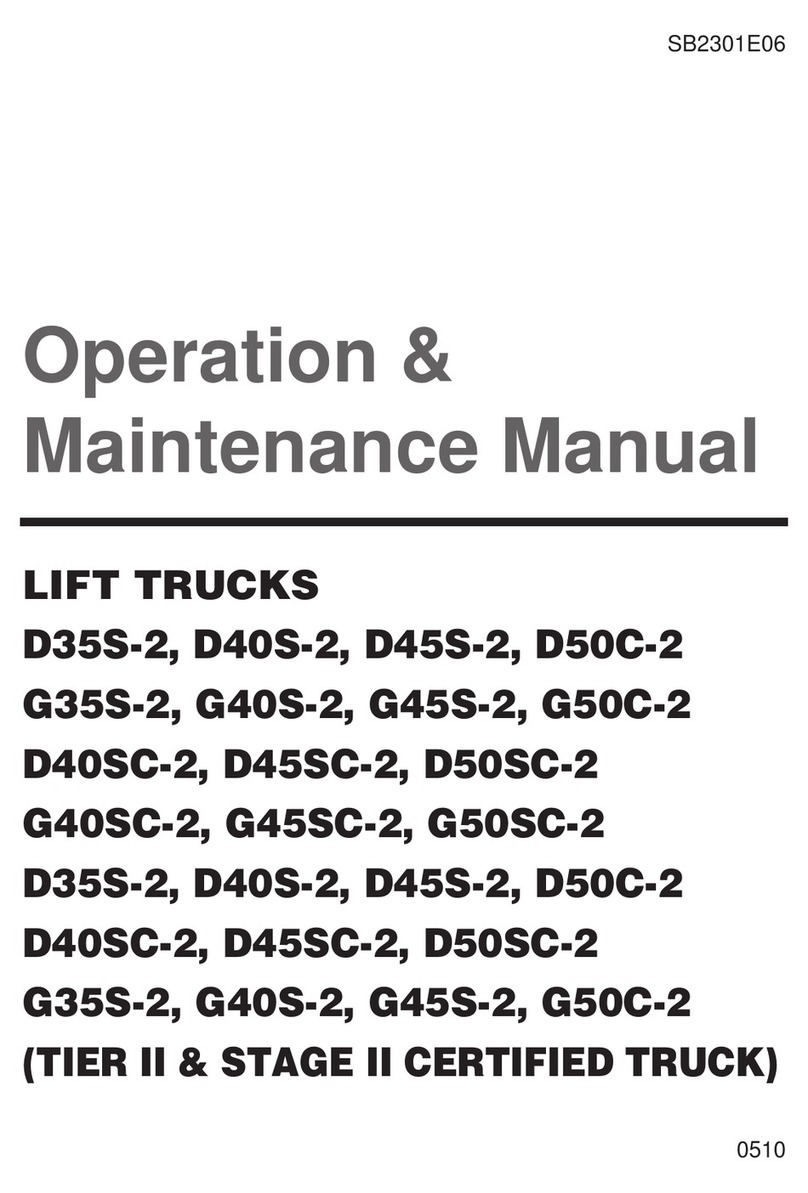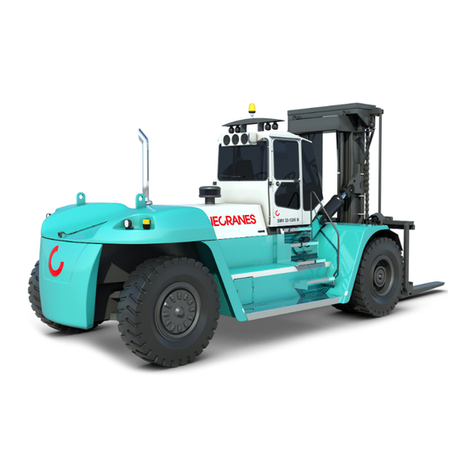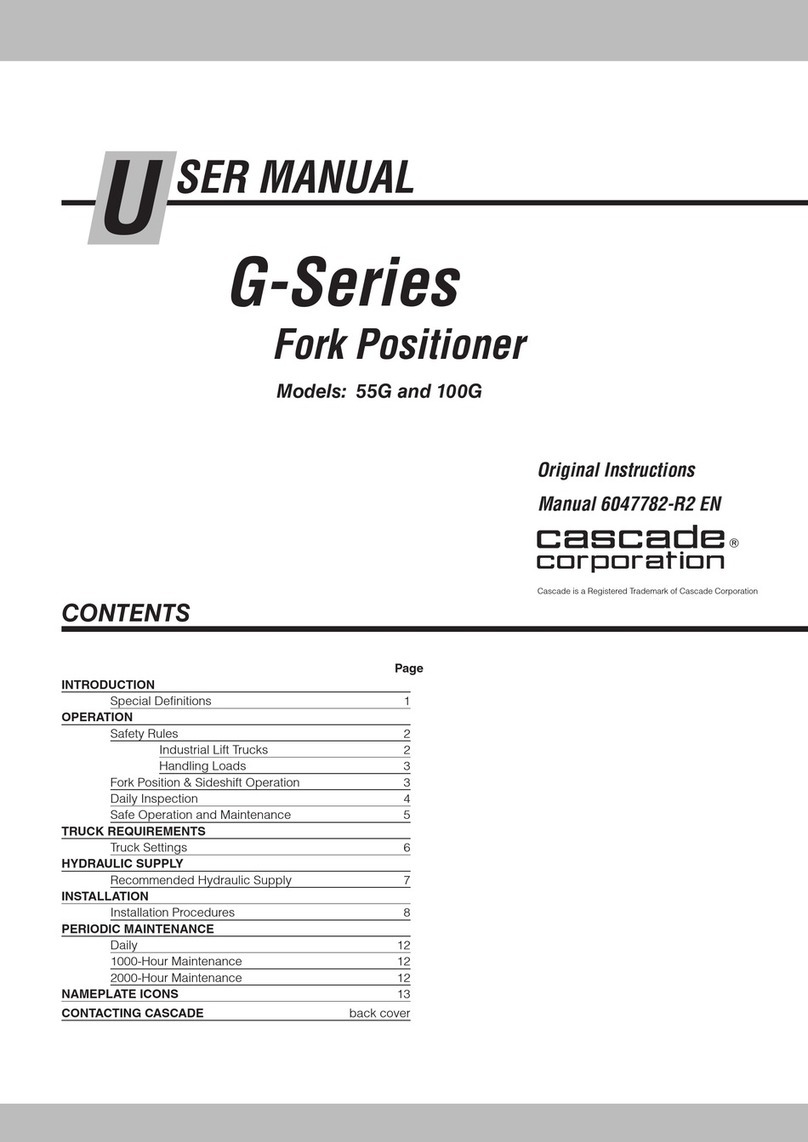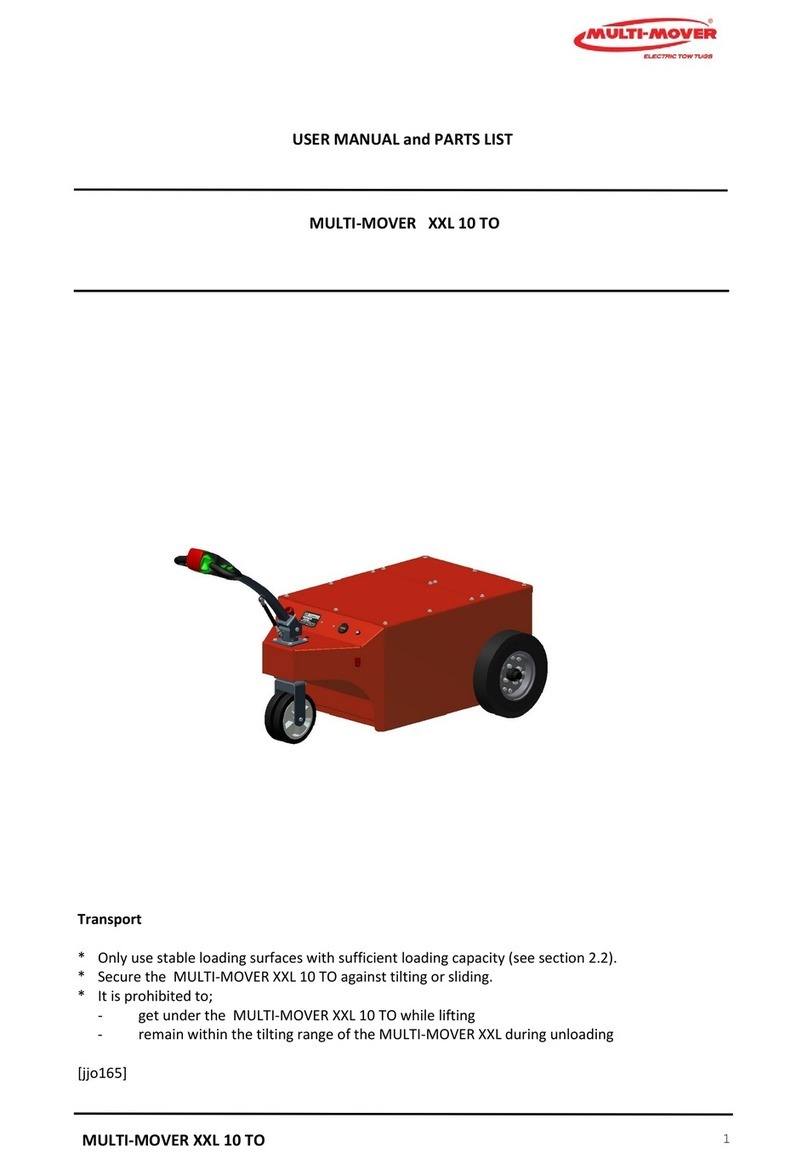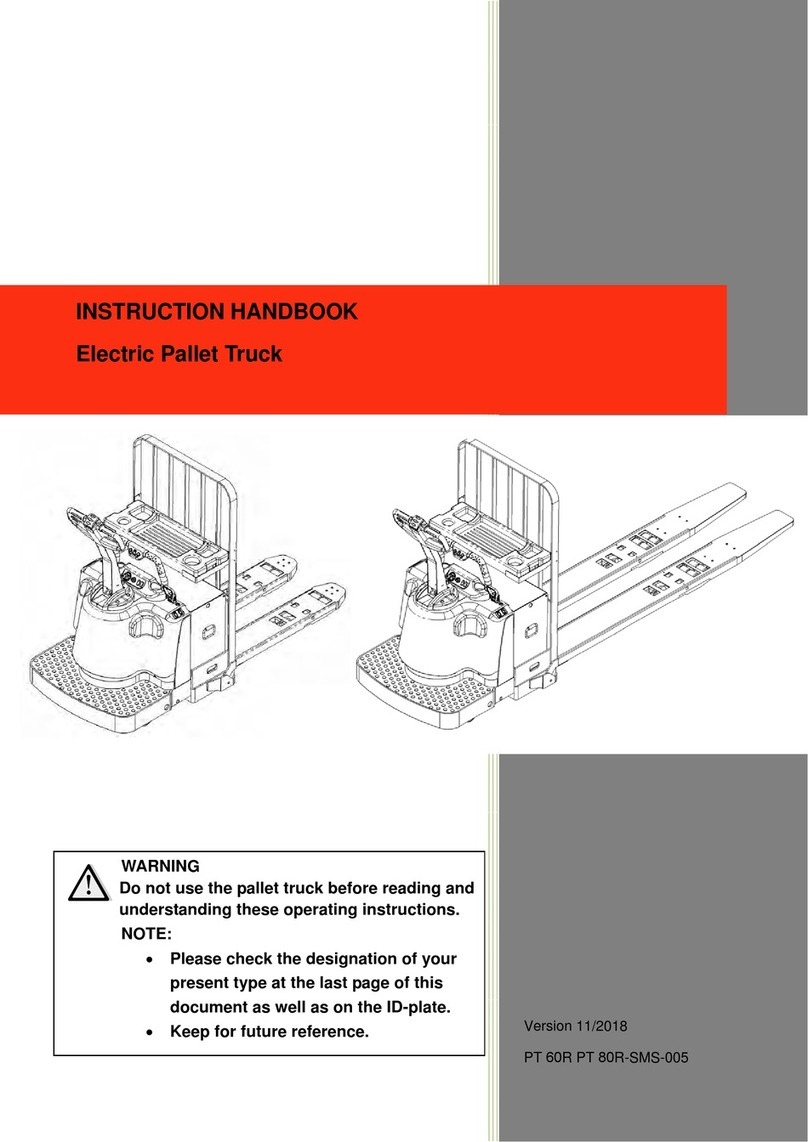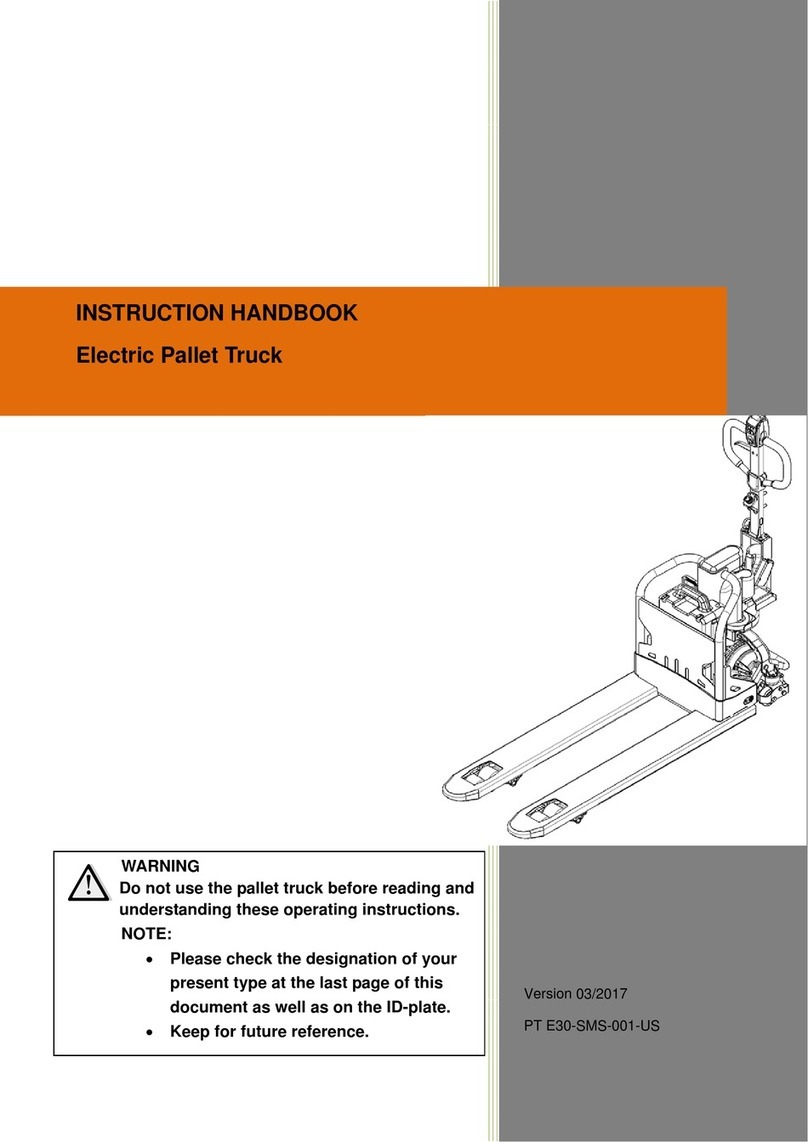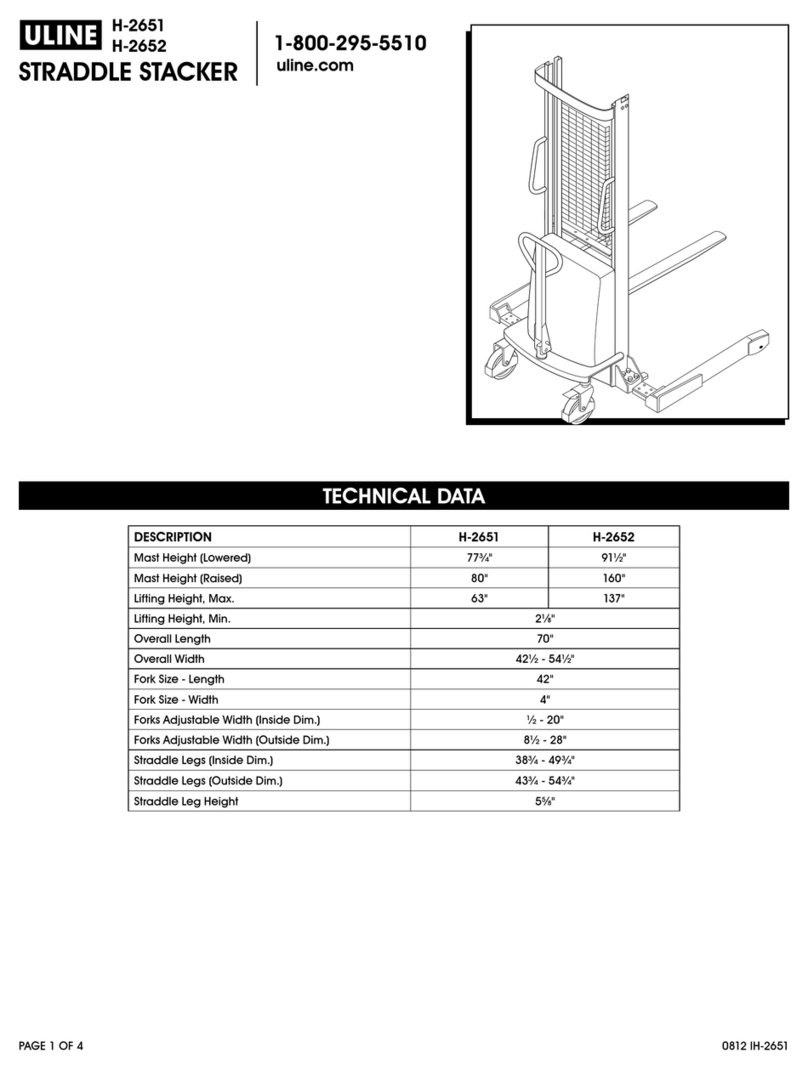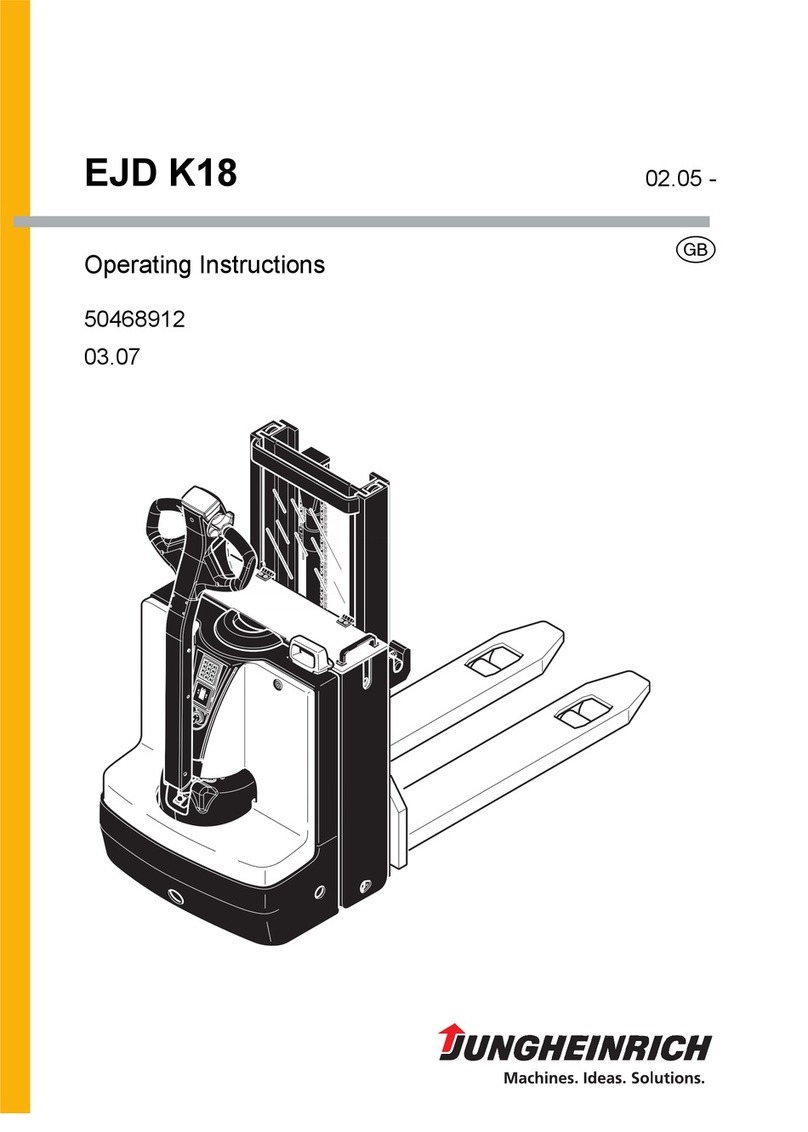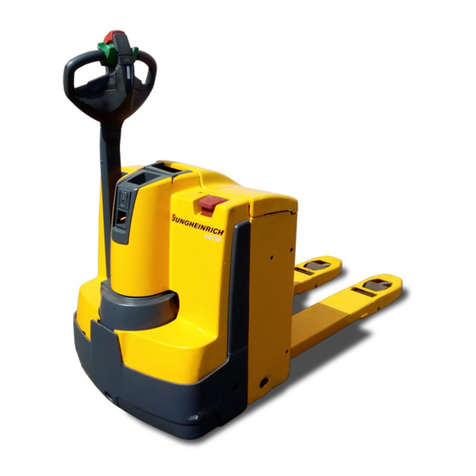The EKKO counterbalance electric forklift trucks are new series of
products developed by our company to meet the market demand, based on the
advantages of electric forklift trucks at home and aboard and in combination with our
existing products and mature technologies. They are characterized by environmental
protection, maintenance-free, long service life, high efficiency and energy saving, high
safety, etc. They are especially suitable for loading and unloading, handling and
stacking of goods in stations, ports, freight yards, warehouses as well as food, textile
and general logistics industries. If equipped with various attachments, it can be used
more widely.
This product is not suitable for working in dusty, charged dusty,
high-temperature and highly corrosive environments! All components shall be
cleaned and maintained regularly for working in a less dusty (non-conductive)
environment!
Due to the new PI concept and ergonomic design, this product is equipped with
low-noise and high-efficiency integral drive axle, large-angle steering axle, wide-view
lifting system and structure body without tail frame and other advanced components. It
is also equipped with high-quality motor, battery, MOSFET electronic control and color
large-screen LCD combination instrument, hydraulic operation valve and full LED
lamp and other advanced components. Therefore, it has the advantages of superior
performance, convenient operation, wide visual field, flexible steering, reliable braking,
good dynamic performance, low noise, no pollution and aesthetic appearance.
This Manual mainly introduces the technical parameters, structure, working
principle, operation, maintenance and other aspects of this series of products. It can
help the operator to use the electric forklift truck correctly and give full play to its
efficiency. The operator and equipment management personnel shall read it carefully
before operating the forklift truck.
